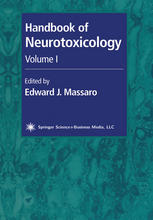

Most ebook files are in PDF format, so you can easily read them using various software such as Foxit Reader or directly on the Google Chrome browser.
Some ebook files are released by publishers in other formats such as .awz, .mobi, .epub, .fb2, etc. You may need to install specific software to read these formats on mobile/PC, such as Calibre.
Please read the tutorial at this link: https://ebookbell.com/faq
We offer FREE conversion to the popular formats you request; however, this may take some time. Therefore, right after payment, please email us, and we will try to provide the service as quickly as possible.
For some exceptional file formats or broken links (if any), please refrain from opening any disputes. Instead, email us first, and we will try to assist within a maximum of 6 hours.
EbookBell Team

4.8
94 reviewsNeurotoxins-whether human-generated pollutants or natural products-have recently attracted growing scientific interest. In the Handbook of Neurotoxicology, Volumes I and II, many leading researchers and clinicians-all acknowledged experts-review in depth the status of research in key areas of current neurotoxicologic interest and examine the latest methodologies for in vivo assessment of a wide spectrum of agents exhibiting neurotoxicologic properties. This first volume of the Handbook focuses on the biological effects of human-made neurotoxins, as well as those of natural origin, which so often provide valuable therapeutics and research reagents. Topics range from anticholinesterase insecticides and pesticides that target ion channels, to such metals as mercury, lead, zinc, and to the polytypic byproducts of combustion and industrial manufacture. The natural toxins discussed include those of microbial origin (microbial, marine, clostridial, and botulilinal neurotoxins), as well as those of animal origin (snake, spider, and scorpion venoms). Volume II concentrates on the biological effects of human-made toxins on the developing nervous system, reviews the neuronal impact of drugs of abuse, and provides state-of-the-art methods for the evaluation of the biological effects of neurotoxicants by both imaging and neurobehavioral assessment. Up-to-date and timely, the Handbook of Neurotoxicology, Volumes I and II, not only affords today's biomedical and clinical investigators a full panoply of knowledge in all the critical areas of current neurotoxicologic interest, but also illuminates the latest methodologies for assessing the effects of a broad spectrum of significant neurotoxicological agents.